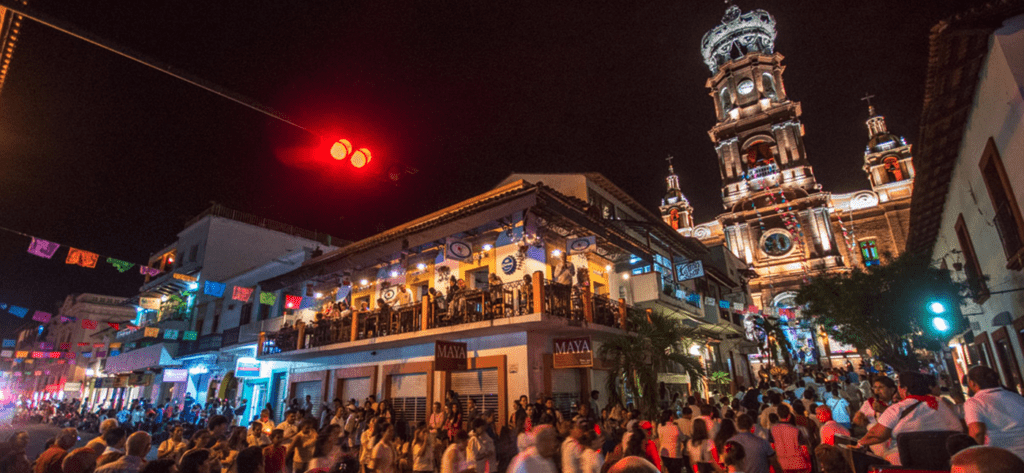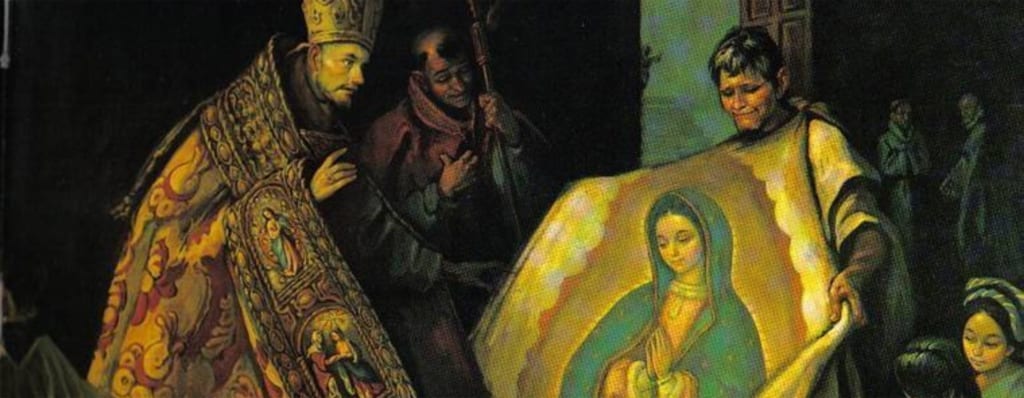
If you’ll be in Puerto Vallarta during the first 12 days of December, you’ll surely have the opportunity to witness “peregrinaciones”, the Spanish word for pilgrimages. Every year from December 1st to the 12th, hundreds of people from Puerto Vallarta and other localities gather and walk in a group to sing, pray and express their faith to the Virgin of Guadalupe. Followers thank the Virgin for the blessings received throughout the year may it be for good health, opportunities for work or even a special love interest.
Expect to see cars decorated with allegorical representations of the time of the Virgin’s appearance along with banners with creative paintings to express gratitude. You can also appreciate pre-Hispanic dances led by young people dressed in “penachos” made of colored feathers, dancing to the rhythm of a drum. It’s a wonderful opportunity to meet the people of Vallarta, experience their idiosyncrasies and their feelings as a community.

Throughout the historic center of the city, you’ll find many traditional Mexican food stalls, which makes for an excellent opportunity to taste the true gastronomy of the city. Tacos, enchiladas, gorditas, sopes, give each dish an opportunity to delight your palate.
What’s the story behind “peregrinaciones”? How did they start? To explain, I’ll tell you a story that happened a long, long time ago.
According to Catholic tradition, everything began in pre-Hispanic times, approximately in the year 1531. During the first days of December 1531, an indigenous man by the name of Juan Diego Cuauhtlatoatzin walked along the hill of Tepeyac and a woman whom he recognized as the Virgin Mary appeared and asked that he go to see the Bishop, Fray Juan de Zumárraga, so that a temple could be built in her name on the hill of Tepeyac. Juan Diego obeyed the order and expressed to the Bishop the request of the Virgin, who did not believe him and asked for a sign, a test so that he could be sure of the truthfulness of his words. Juan Diego let the virgin know the requests of the Bishop and asked him to return the next day.
However, Juan Diego couldn’t return, because his uncle, Juan Bernardino, was ill and about to die. Juan Diego went to look for a priest to prepare his uncle for his death and on the way, he went back to the Virgin. The Virgin asked him not worry about his uncle and then Juan Diego traveled to the top of the hill to cut flowers, among them roses from Castile. However, at that time of the year, the roses were not in season, therefore, it was a miracle when he discovered the roses that displayed the signal requested by the Bishop.
Juan Diego obeyed the Virgin’s instructions and carried the flowers on his “tilma” (mantle). Upon arriving in the presence of Fray Juan Zumárraga, Juan Diego told the Bishop everything he had seen and heard and that finally, the flowers had arrived. Upon opening his tilma (mantle), they realized that the image of the Virgin Mary had been printed on the mantle. This removed all doubts the Bishop had and he built the temple on behalf of the Virgin of Guadalupe. It’s said that the current image in the Basilica of Guadalupe, in Mexico City, is the same image that was delivered to Juan Diego in 1531.

Evidently, over the years controversy has been generated regarding the truth of the miracle. But what is a reality is that despite the years, modernity and new technologies, this is one of the most entrenched customs in Mexico. Each year, the Basilica of Guadalupe receives millions of pilgrims from different parts of the world and in Puerto Vallarta, having as its main parish, the church of Guadalupe, the pilgrim tradition has been adapted to our local environment. If you have the opportunity, join the pilgrimages, live the tradition with the local community and save the moment in your memories.
